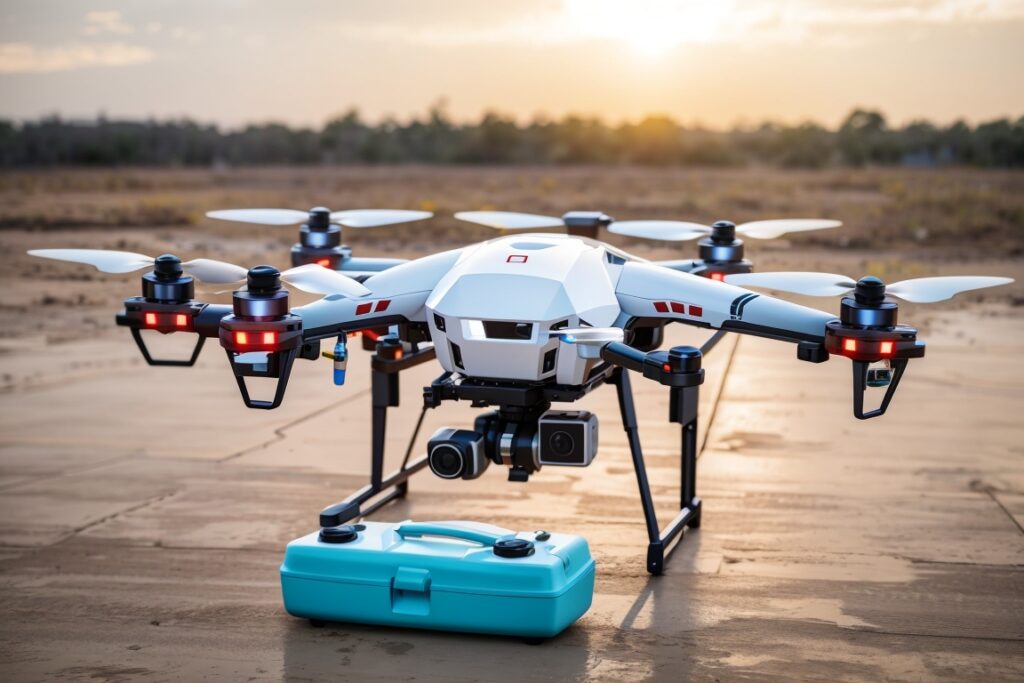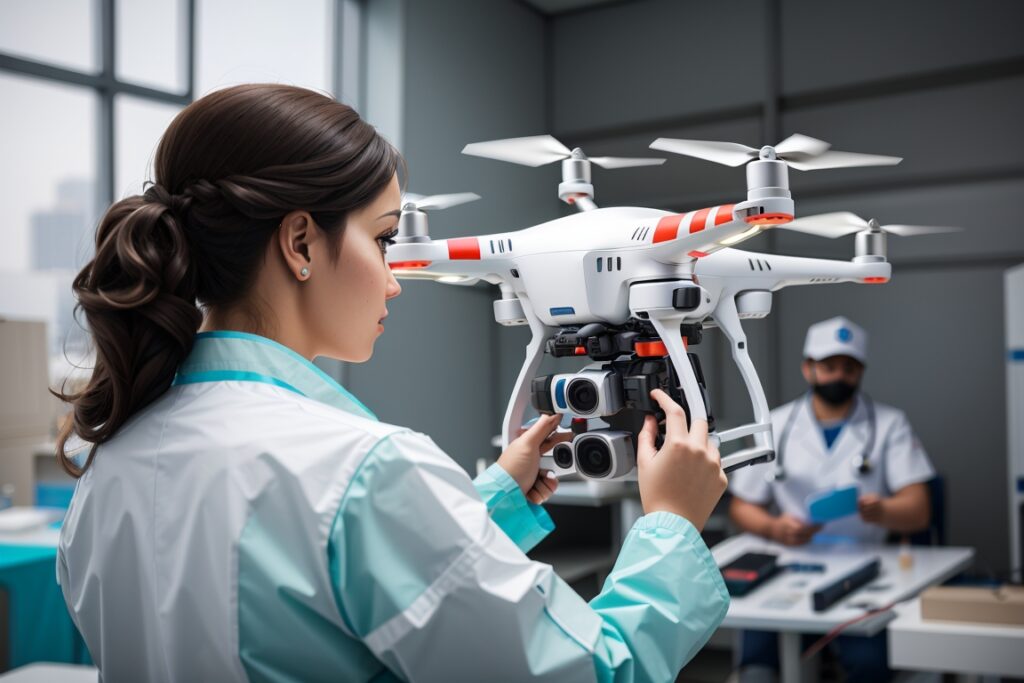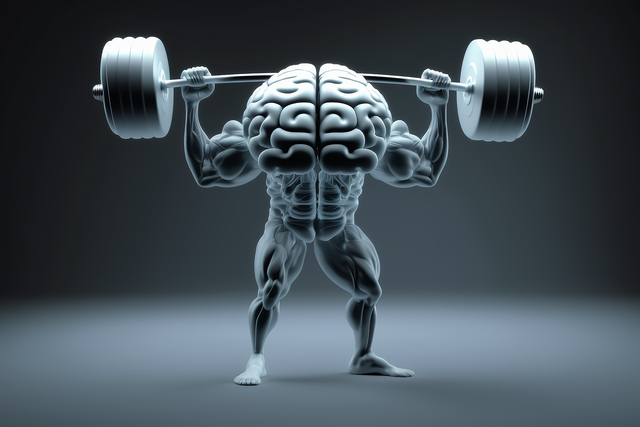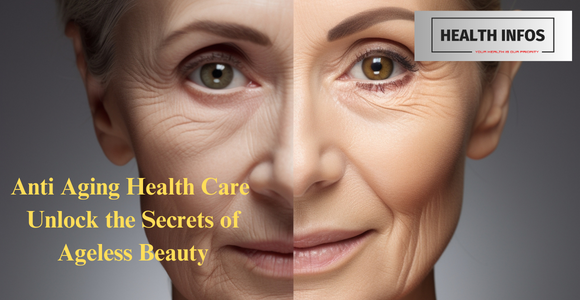The impact of drones on the health industry has been revolutionary, bringing about changes and solutions to standing challenges. In recent years, technology has evolved rapidly, introducing advancements that have captured the world’s attention.
Drones, also known as Unmanned Aerial Vehicles (UAVs) are not just toys for tech enthusiasts or tools for capturing photographs. They are driving a transformation across sectors, with the healthcare industry being particularly affected by their capabilities and potential.
In this blog post, we will delve into how These Gadgets are transforming and revitalizing the
healthcare industry. The healthcare field, which has historically relied on methods, is currently undergoing a transformation as drones discover innovative and impactful uses within their realm.
These remarkable technologies have the potential to enhance the effectiveness of healthcare
services but also save lives and improve experiences, leading to a more promising and healthier future.
Definition of Drones.

Drones, in terms, are aircraft that operate without a pilot physically present onboard. Instead, they are controlled remotely using a device that closely resembles a video game console.
Alternatively, they can follow programmed flight paths using intelligent software connected to GPS navigation systems. Although the idea of These Gadgets has been around for quite some time, it is the advancements in technology that have sparked an increase in their use across various industries, including the healthcare sector, which has greatly benefited from them.
Drones have come a long way since their early beginnings into complex hi-tech equipment that havegreatly expanded their spectrum of activities.
They have become essential tools in healthcare that provide better care for patients, facilitate fast delivery of medical supplies, and contribute to emergency response efforts.
The skies are witnessing incredible machines that are reshaping healthcare delivery, increasing efficiency, and creating endless opportunities in telemedicine and targeted surgery, among others.
Overview of the Impact of Drones in the Health Industry
Drone technology has revolutionized the way that the medical and health industries work. These Gadgets have changed the face of health care, from expediting the delivery of medical supplies to distant places to aiding delicate surgeries involving micro and nanotech.
They are essential in improving patient care, increasing service delivery, and advancing medical research. This discussion on impacts will be covered in detail in the next sections.
1-this innovation is revolutionizing the health industry.
- In the healthcare sector, the supply of medical supplies traditionally depended on ground-based transportation.
- Nevertheless, this traditional approach presented significant challenges in terms of time and accessibility, especially in areas that are far from a disaster-affected or remote location.
- These challenges have resulted in drones becoming an innovative technique to enhance transportation speed.
- The logistics workers are critical for delivering vital medical drugs and necessary medical gadgets that are needed by patients as a matter of urgency.
2- Drone is now a source of incalculable medical facts.
Drones are equipped with sophisticated sensors and, therefore, can monitor different environmental elements, such as air quality. Such data can prove extremely valuable, especially for patients with respiratory conditions, allowing physicians and other members of the care teams to make informed
decisions or interventions.
To put it simply, the use of vehicles not only improves the quality of health care delivery but also enables the gathering of important medically related data.
The convergence of technology and healthcare promises to provide not only increased efficiencies but also improved patient care, hence better patient outcomes.

Role of Drones in Micro and Nanotechnology in Health.
The Health Industry is entering new eras by integrating drones with micro- and nanotechnologies. Micro, or rather, nanotech, are tiny things; these are structures, devices, and systems that can be seen only through a microscope.
Researchers are working on the design of nano-drones, like tools for microscopic navigation in the human body. Such unmanned vehicles might deliver drugs to dying cells, work out minor surgeries, and conduct detailed inspections within the body.
The emergence of micro- and nanotech applications for drones creates new opportunities for the development of more precise and less invasive treatments that may reorient healthcare toward a range of diseases.
Radio wave based in Health-related Applications.
Health applications of radio waves as electromagnetic radiation, and future drones will make it reach even higher heights. They use these waves for medical imaging, therapy, and research.
Drones that possess the ability to transmit and receive radio waves can be used by specialized caregivers for performing remote medical operations and examinations.
For example, drones could be used for scanning and imaging from a distance and transmitting immediate information to the medical team. It would be especially beneficial on urgent occasions or in remote areas where establishing regular medical imaging machinery is unrealistic.
The Ultrasound Technology.
It is the versatility of ultrasound technology that renders it among the most important tools in contemporary medicine by ensuring that it is not invasive. This is used for different diagnostic procedures, including imaging of a fetus in the womb to detect heart conditions.
Portable ultrasound devices are now being installed on These Gadgets for immediate imaging in distant regions. Drones transmit real-time ultrasound images to physicians, thus enabling immediate diagnosis and treatment decisions. The employment of drones can also play a vital role in saving lives during emergencies.
The drone is revolutionizing health transport.
- With drones, the transport of medical supplies, especially in hard-to-reach areas, has become swift and reliable. They help in the delivery of essential items such as vaccines, medicines, blood samples, and other medical supplies.
- The invaluable usefulness of drones in disaster-stricken and rural areas with inadequate transport infrastructure This helps them to avoid traffic and tough terrain and deliver crucial supplies timely to patient facilities. In addition, one advantage of These Gadgets is that they can run 24/7, thus having a constant delivery chain.
- Drones are not only benefiting healthcare but also igniting innovation. These are forcing conventional methods of health care delivery and management to result in novel ideas and solutions.
- For instance, Droneports have been developed in Rwanda. Hub hospitals have drones that deliver medical supplies around the country, shortening the wait periods for patients.
- The development of this novel solution was triggered by the need for efficient delivery systems in remote areas. Drones have a lot of potential, and with advances in technology, we anticipate that this technology will bring up more revolutionary inventions in the medical field.
The Use of Drones in Enhancing Health Research
They possess data collection techniques used to collect data from inaccessible areas that help in scientific findings. These Gadgets can take samples from up high or from hard-to-reach places, supplying useful information for research on health.
With drones being able to access war-torn or disease-affected areas, it becomes possible for one to study the area closely without putting human life at stake. The advent of drones has paved the way for scientific exploration by making it possible for researchers to collect data that was hitherto impossible to collect.
The Potential Roles of Drones for Health in the Future.
As drone technology continues to develop, it is expected to become more and more
important for healthcare. They are numerous in potential use, from telemedicine and remote patient monitoring to advanced surgical procedures and personalized medicine.
As AI and Machine Learning advance, drones will become more sophisticated, executing complex jobs requiring little or no human intervention. Some of the uses of drones may involve automated regular check-ups, and this could improve access to health care for people living far away.
In the future, it is possible that ambulance drones will be developed, carrying medical supplies and communication tools to arrive on emergency sites quicker than regular ambulances, thus saving many lives. In other words, the future of health is largely open-ended.
Drones can change telemedicine and remote healthcare.
Drones could act as mobile telemedicine units in regions with limited access to
medical facilities and in situations of emergency.
- These technologies can be endowed with audiovisual communication tools, medical equipment for remote diagnosis, and guidance to patients in real-time by healthcare specialists.
- They envisage a case where a drone equipped with a camera for medical communication technology is being sent to an isolated region where urgent medical care is needed for a patient.
- On-site personnel can be directed by a healthcare provider miles away about the examination, offer immediate medical advice, or even remotely assess vital signs.
- Besides widening access to health care, drones in telemedicine also save critical moments when responding to emergencies.
Drones are invaluable assets in disaster response and emergency. healthcare services.
During natural disasters, accidents, or public health crises, a quick and effective response is essential.
- Drones equipped with thermal imaging cameras and sensors can rapidly assess disaster-stricken areas, locate survivors, and identify potential hazards.
- Furthermore, drones can transport emergency medical supplies, such as first aid kits, defibrillators, or even blood products, to remote or inaccessible locations.
- They can establish communication networks in areas with disrupted infrastructure, enabling emergency responders to coordinate efficiently.
- In the context of large-scale emergencies, drones can also be employed for mass casualty triage.
They can quickly assess the severity of injuries and prioritize medical interventions, ensuring that limited resources are allocated optimally.
CONCLUSION
In summary, drones are transforming the healthcare industry by enhancing disaster response and emergency healthcare services, ultimately saving lives and mitigating the impact of emergencies. Their agility, speed, and versatility make them indispensable tools in times of crisis.






